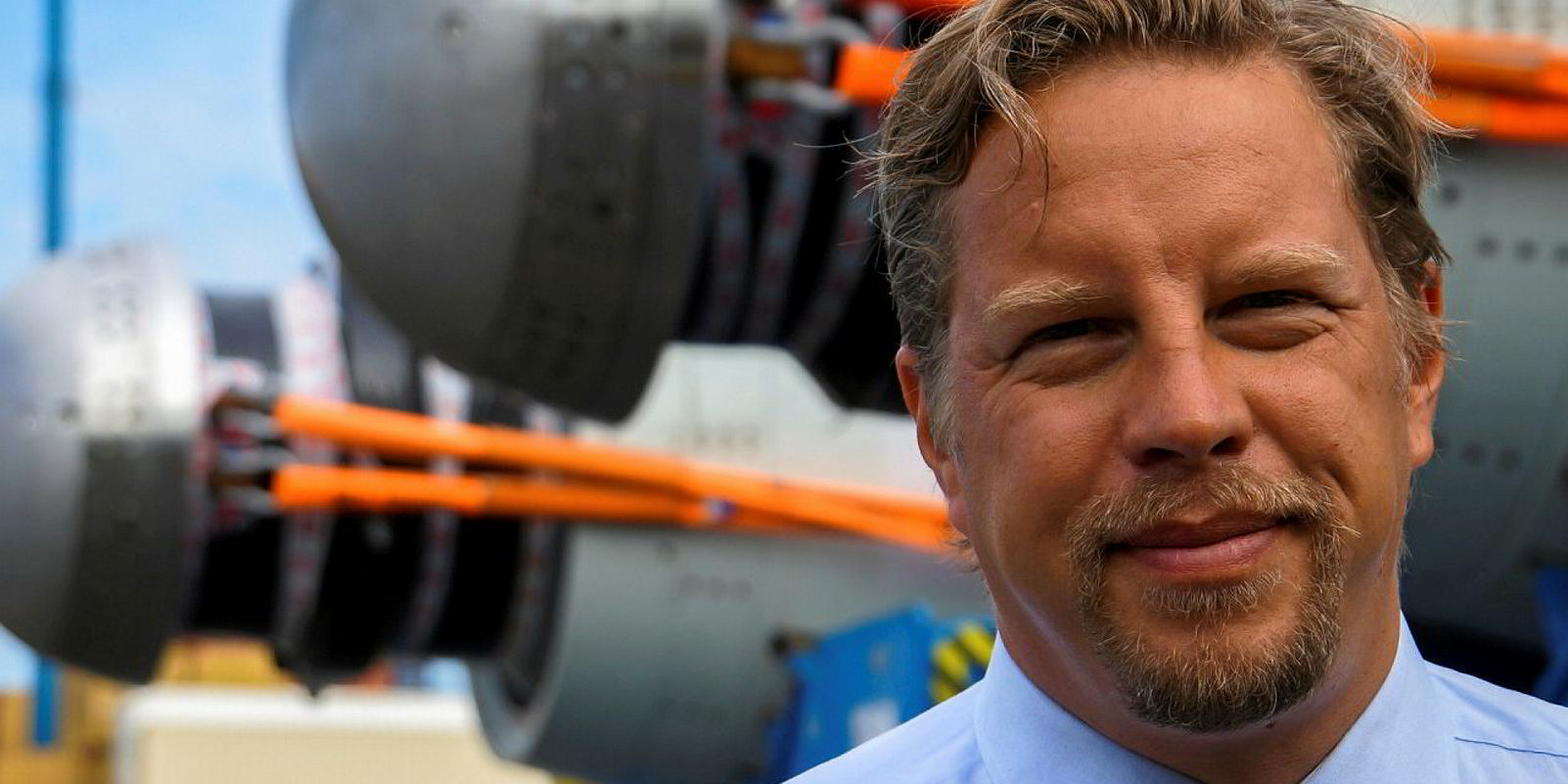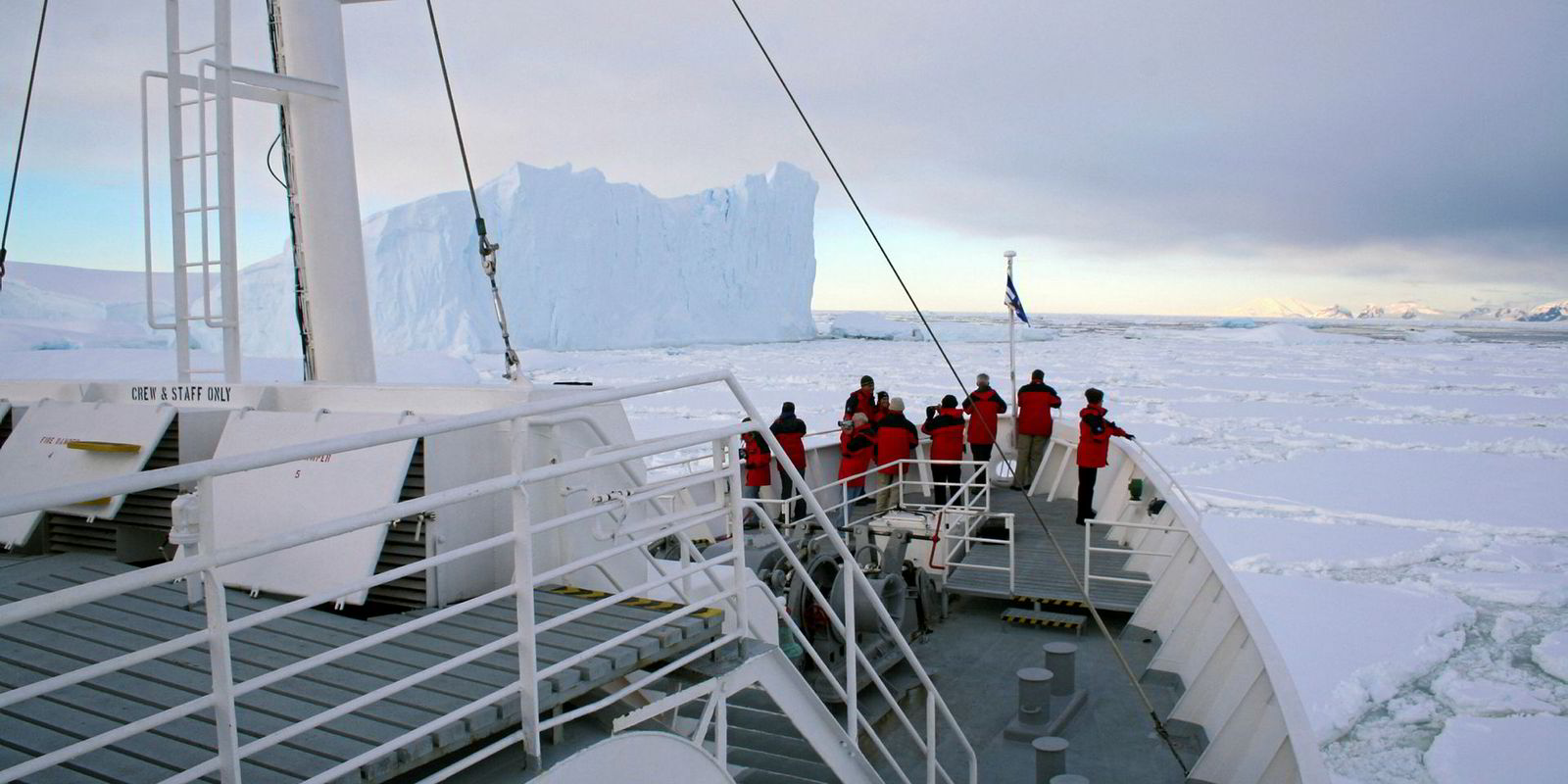Imagine the equivalent in weight of two to four jumbo jets slung underneath the hull of a cruiseship.
That is the reality of a form of propulsion that has swept the cruiseship industry in recent years and is becoming a feature of vessels being built for polar voyages.
The 149,000-gt luxury cruise liner Queen Mary 2 (built 2004) had four massive 21.5 MW Rolls-Royce Mermaid pod propulsors installed — then the most powerful podded thrusters. At about 300 tonnes apiece, they weighed slightly shy of an Airbus A380-800 or Boeing 747.
Pod propulsors are installed outside the hull, with the electric motor housed inside the unit, which can be rotated or 'azimuthed' 360 degrees and removes the need for a rudder.
The motor is connected directly to the propeller without gears. Electricity is produced by an onboard engine, typically diesel these days .
Subsequently, European industrial giant ABB Marine & Ports has delivered even more powerful units rated at 22 MW for Norwegian Cruise Line’s 167,700-gt Norwegian Joy (built 2017), which are also being installed on its sistership.
The same technology is now helping propel the growth in smaller, luxury expedition cruiseships.
ABB currently leads the market with most new cruiseships and ice-going vessels now said to be fitted with its trademark Azipod propulsion. Many offshore and construction units are also fitted with the technology.
The story began more than 27 years ago when Azipod propulsion was installed on a vessel owned by the Finnish Board of Navigation, the Seili.
More than 14 million hours of operating time have been logged since then by Azipods, with Ponant Cruises' icebreaking expedition ship, booked recently at Fincantieri subsidiary Vard, marking Azipod’s 100th cruiseship order.
Although the concept of azimuth thrusters can be traced back decades, it was ABB that developed a system with the electrical motor located inside the pod itself.
Improved use of ship space compared with conventional shaft-line vessels, greater manoeuvrability and energy efficiency are among the features that appealed to cruiseship operators.

The first Azipod cruiseship customer was Carnival Cruise Lines in 1995 for two ships in its Fantasy-class series — the 71,900-gt Elation and 70,400-gt Paradise (both built 1998).
Royal Caribbean Cruises followed in 1997 with three units installed on the largest cruiseship at the time, the 138,000-gt Voyager of the Seas (built 1999).
Finnish builder Kvaerner Masa-Yards recognised the potential of using a technology developed originally for ice-going vessels on cruiseships, says Marcus Hogblom, head of passenger, ice and dry cargo at ABB Marine & Ports.
“It has become the prime propulsion unit for the cruise industry,” Hogblom says in an interview alongside the division’s managing director, Juha Koskela.
Hogblom points to upwards of 10% fuel savings compared with traditional systems and the ability to use double-acting hull designs to break through thick ice moving astern, the opposite to a conventional icebreaker.
By using less power, the carbon footprint is reduced and, being gearless with no shaft line, a “minimum” amount of lubrication oil is needed using pod propulsors compared with mechanical thrusters. Electrical motors provide torque from zero, favourable for icebreaking, while the absence of gears cuts noise and vibration — a priority when carrying passengers.

Azimuthing pods can be rotated to any horizontal angle, removing the need for rudders. Full power is available throughout 360 degrees, which means it is easy to put cruiseships in dynamic positioning mode.
It means expedition cruiseships can navigate close to the ice for sightseeing, without the need for an anchor.
Even larger, non-expedition cruiseships such as Royal Caribbean’s Oasis class vessels, the largest passengerships in the world, can manoeuvre within a decimetre of an object, Hogblom says.
Ponant’s Polar Class 2 newbuilding will be capable of passing through ice 2.5 metres thick, “so [is] really as capable as a nuclear icebreaker, if not more”, he says.
Aker Arctic’s double-action principle, made possible by the use of pods, enables forward sailing through compact ice and reverse sailing in extreme ice conditions. Hogblom says the stern of such vessels is similar to icebreakers, while the bow is efficient also in open waters.
Ponant’s 17 MW Azipods are slightly more powerful than even the 15 MW units specified for the Russian Yamal Arc7 icebreaking LNG carriers. The pods, with their six-metre propellers, have the secondary role of crushing and pushing away ice broken by the hull.
In addition, Ponant’s substantial battery package on the ship should enable it to remain operational while stationary in ice for several hours, with zero emissions. Once moving, battery length depends on speed.
Some 18 cruiseships are already operating with Azipods and another 15 to 20 with installations by ABB’s rivals.

Rolls-Royce and Siemens are among other producers, but Koskela says over the past 10 years ABB has been by far the biggest player. However, the success of pods is likely to generate increased competition.
Ponant’s vessel is the most extreme in terms of ice class, its mega-pods comparing with about 5 MW for each of those to be installed on polar cruise capable-vessels ordered by Crystal Cruises and 3.5 MW for a Lindblad Expeditions ship ordered at Norway’s Ulstein Verft.
ABB's largest pod propulsor is 22 MW, although it is not just power that counts, but also torque. Its 17 MW units are comparable in size with 22 MW propulsors.
Pods suffered some well-publicised problems affecting a competitor several years ago. ABB also faced “challenges” but decided to stick with the concept and for cruiseships offered a completely new design about 10 years ago, which it says is easier to maintain.
Training is provided for captains while the company has invested heavily in so-called connectivity.
Koskela says ABB is providing “troubleshooting” from shoreside for about 700 ships of different types, including cruise vessels.





